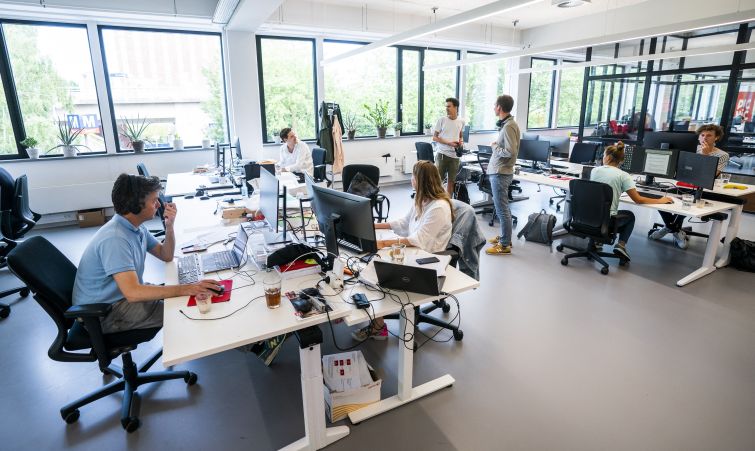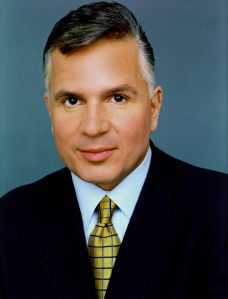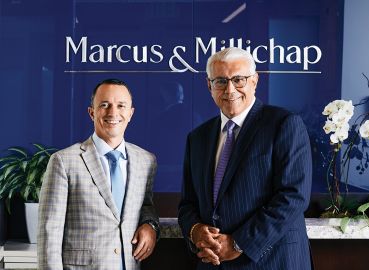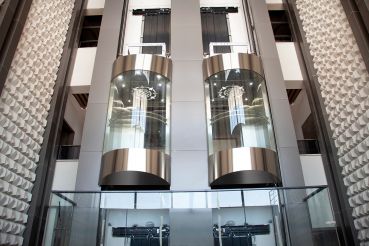JLL’s Peter Miscovich Wrote It Down: Flexible Workplaces Are the Future
The managing director also thinks some larger companies will want long-term headquarters leases — after that, though, it’s wide open
By David M. Levitt June 7, 2022 9:00 am
reprints
When it comes to the future of offices in post-COVID commercial real estate — speculation about which has become a favorite parlor game for people involved — Peter Miscovich wrote the book.
Or, more exactly, he co-wrote the book. He and two colleagues at JLL, one of the major global commercial property brokerages, produced a new book titled The Workplace You Need Now: Shaping Spaces for the Future of Work.
There are probably few people on the planet more qualified to prognosticate on the future of offices than Miscovich, a managing director at JLL whose pedigree includes research affiliations with Harvard, MIT and Columbia, and whose work involves helping the Fortune 100 navigate office expectations.
Thanks to laptops and widespread internet, we no longer have to be working drones umbilically tied to the office. Now we’re free bees, ready to pollinate at home, at our office buildings, or just about anywhere in between. And even if we were stuck in our ways, a year or more when we were forced and expected to be productive in places other than the office may have convinced us there’s a new way to work.

The genie is not going back into the bottle. Or, as Miscovich & Co.’s book put it, “The pandemic shall pass, as pandemics always do. But the learnings and experiences of a yearlong world of virtual work will remain.”
In early May, Miscovich spent some time on the phone with Commercial Observer explaining just what he and his co-authors meant.
His remarks have been edited for length and clarity.
Commercial Observer: For those who might want the book in a nutshell, what is your take on the office market, which seems to be going through some unprecedented pressures right now?
Peter Miscovich: I think the title of the book says it quite nicely: The workplace you need now is the post-pandemic workplace. It requires a personalized approach to the workplace, a responsible, sustainable approach to the workplace, and an experiential approach to the workplace.
The book is divided into those three key pillars. I’ve been involved for over 25 years, 15 of those here at JLL, prior to that at PricewaterhouseCoopers and Andersen consulting. The pandemic accelerated workplace transformation. And the book is a navigational guide to the future of work.
The tone of the book is fairly optimistic. What do you say to all the doom and gloomers out there who look at the unprecedented availability rates, and wonder where all the companies are going to come from to fill that space?
I would say that real estate transformation has been occurring for 50 years, including what we saw in Lower Manhattan post-9/11, in terms of 25 million square feet of commercial office that was transformed to residential real estate, and what we’re seeing with corporate suburban campuses being transformed into logistical operational centers. I mean, the real estate sector is undergoing tremendous transformation. And so the book focuses on that transformation from an office perspective.
And I think we’re going to see some winners and losers over the next 10 years in terms of real estate industry transformation.
The winners will embrace change. They’ll embrace hybrid work, they’ll embrace smart buildings, they’ll embrace sustainability. They’ll embrace smart workplace technologies and amenities and employee experience. So there will be winners and losers, as there always has been in the real estate sector. And the book outlines how corporate occupiers can be winners.
I will add, the book has close to 30 client case studies. The book is focused primarily on our occupier clients, with some investor and landlord and owner clients included as well.
In the book you speak about the resiliency of hybrid work. A lot of people might think the opposite, that the nature of hybrid work by its nature is unstable. What did you mean and why do you think that hybrid is resilient?
For a majority of the industry, the pandemic came as a complete surprise. What’s amazing is that in March 2020, close to 3 billion people across various organizations and sectors all worked remotely. So as we move into ’22 and ’23 and ’24, and as we look at the potential for future pandemics, future climate risk events, future cybersecurity disruptive events, we’re going to have to look at hybrid work and hybrid workplace flexibility as a means of resiliency for these future disruptive events.
And so whether it’s concentration risk of having all of your employees in a single headquarters, or having a very large portfolio where everybody’s going to the office five days a week — I mean, clearly in March 2020, we all had to pivot. And so we believe in the future organizations will be challenged with other disruptive events, and flexible hybrid work strategies will enable greater resiliency to meet those disruptive events.
The pandemic may be just chapter one of what’s to come. You might have recessions, climate change events, natural disasters. I helped real clients face Superstorm Sandy’s aftermath here in New York. Nine-eleven, hurricanes, earthquakes, cybersecurity risk, fallout from even supply-chain risk. Having a more hybrid, flexible, agile real estate portfolio is a more resilient approach.
To what extent do you see the classic model — long-term leasing of offices — surviving? It seems for the longest time, the industry was banking on companies filling space for decades-plus, and recent events have caused us to question that.
We are working with several Fortune 100 clients right now to determine whether there will be a long-term commitment by the organization for a large corporate headquarters footprint or to move toward a more streamlined hybrid corporate headquarters with a redesigned and reduced footprint for the future.
And, if you think about the new JPMorgan Chase headquarters on Park Avenue, or any large headquarters commitment, I mean, that can be a 20-year commitment easily, it can be a 30-year commitment.
I think you’re going to see these collective headquarters leasing commitments that will be long term. And then, in my view, from an enterprise occupier perspective, it’s difficult to plan more than five years out for many organizations today. If we carve out that large headquarters longer-term commitment, everything else can be variable.
And this is where flex-work, coworking, workplace as a service, shorter-term leasing comes in. We are seeing some clients look to ownership for the longer term, in parallel with longer-term leasing. But then we’re seeing a lot of variability in terms of flexible leasing, shorter-term leasing, coworking, satellite offices. I think building owners, landlords and developers will have a very diverse landscape in the future.
Companies seem very happy to have new, highly amenitized space that they think lifts up their employees. And they don’t seem to mind if they are in that space only two days a week, three days a week. They’ll live with that, as long as the space says what the corporation wants it to say. What do you see your clients doing?
We’re seeing hybrid occupancy — occupancy that’s less than 60 percent per week in Class A space, with a high-quality, peak experience environment in terms of amenities and services and technology. And I do think it’s fascinating to see the flight to quality — buildings in Hudson Yards, and 1 Vanderbilt, all of them doing very well in the last two to three years.
But those are selective envelopes, if you will — financial services, or hedge funds, or media or technology firms that are following that high-quality employee experience strategy. And, in terms of hybrid workplace behaviors, companies are now adapting to a new workweek. And it’s still to be determined, in our view. It is still evolving. And it varies by geography, New York versus Texas versus London versus Singapore versus various parts of Europe, even various parts of the U.S.; there are varying degrees of hybrid workplace occupancy and return to office. And we perceive that variability to continue.
Companies want people to come in, they want people to have a high-quality, peak experience. And they’re willing to provision those environments for those employees to attract that talent.
New York will always be a very strong marketplace for talent and for business. But companies in New York will have to adapt to this post-pandemic, intelligent, experiential, new workplace program.
When I use the word program, that’s a societal program that will probably continue on through ’22 to 2023 and 2024. The pandemic was an accelerant to an evolution that was already underway. That acceleration, and continued dynamism of work and the workforce and the workplace, we see continuing.
What is the next innovation that you see unsettling the office market as we know it?
I think immersive collaborative environments that engage people in the office, including metaverse engagement in the office, this next evolution of technology-enabled collaboration in the office potentially, is something that you probably can’t get at home. Accenture and Google and Microsoft, and several of our leading clients are moving in that direction.
And then socialization and team building and mentoring and learning community building activities that really need to be very intentional. Those we see growing in the office. The office is entertainment, coming to the office to be entertained, to learn, to grow, to socialize. The office may not be about work any longer. And it’s a completely new concept.
This interview was originally part of a Tenant Talk newsletter. Please consider subscribing to it or other Commercial Observer newsletters.



